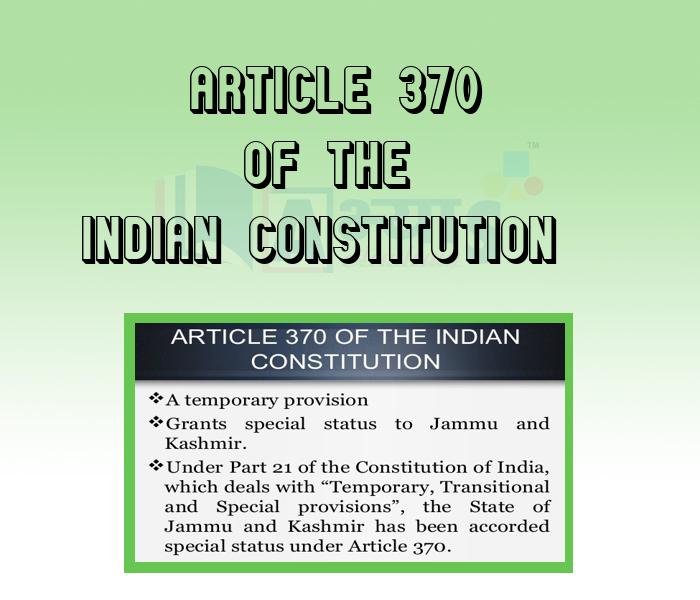Article 370 of the Indian Constitution











Article 370 – Introduction
The key feature of Article 370 was that the Central laws passed by the Parliament did not automatically apply to the erstwhile State of J&K, and it was the right of the State Legislature to approve them by passing a parallel act.
Which of the following are correct : (a) Article 370 provided that the central laws passed by the Parliament did not automatically apply to erstwhile J&K. (b) In Article 370, temporary provisions with respect to the State of Jammu and Kashmir are mentioned. | |||
| Right Option : C | |||
| View Explanation | |||
The power of Parliament to make laws for the said State shall be limited to those matters in __________________________ which, in consultation with the Government of the State. | |||
| Right Option : C | |||
| View Explanation | |||
Which of the following are correct : (a) In 1948, year, the Government of the J&K means the person for the time being recognised by the President as the Maharaja of Jammu and Kashmir for the purpose of article 370. (b) Application of Ar 370 implied that to apply a central law to the state on subjects included in the Instrument of Accession, mere “concurrence” with the state government is required. (c) In article 370, temporary provisions with respect to the State of Jammu and Kashmir are mentioned. | |||
| Right Option : D | |||
| View Explanation | |||
Students / Parents Reviews [10]
Abhyas is a complete education Institute. Here extreme care is taken by teacher with the help of regular exam. Extra classes also conducted by the institute, if the student is weak.

Om Umang
10thI have spent a wonderful time in Abhyas academy. It has made my reasoning more apt, English more stronger and Maths an interesting subject for me. It has given me a habbit of self studying

Yatharthi Sharma
10thMy experience with Abhyas academy is very good. I did not think that my every subject coming here will be so strong. The main thing is that the online tests had made me learn here more things.

Hiya Gupta
8thIt was good as the experience because as we had come here we had been improved in a such envirnment created here.Extra is taught which is beneficial for future.

Eshan Arora
8thMy experience with Abhyas is very good. I have learnt many things here like vedic maths and reasoning also. Teachers here first take our doubts and then there are assignments to verify our weak points.

Shivam Rana
7thAbhyas Methodology is very good. It is based on according to student and each child manages accordingly to its properly. Methodology has improved the abilities of students to shine them in future.

Manish Kumar
10thOne of the best institutes to develope a child interest in studies.Provides SST and English knowledge also unlike other institutes. Teachers are co operative and friendly online tests andPPT develope practical knowledge also.

Aman Kumar Shrivastava
10thBeing a parent, I saw my daughter improvement in her studies by seeing a good result in all day to day compititive exam TMO, NSO, IEO etc and as well as studies. I have got a fruitful result from my daughter.

Prisha Gupta
8thIt was a good experience with Abhyas Academy. I even faced problems in starting but slowly and steadily overcomed. Especially reasoning classes helped me a lot.

Cheshta
10thIt has a great methodology. Students here can get analysis to their test quickly.We can learn easily through PPTs and the testing methods are good. We know that where we have to practice
